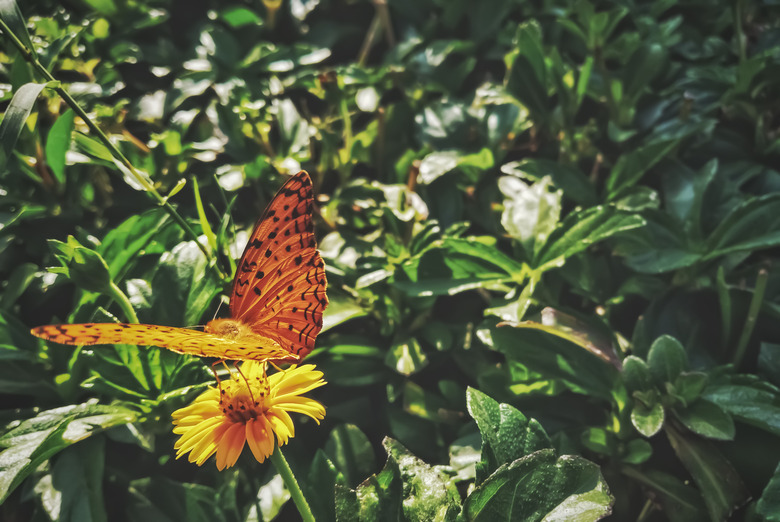Facts About Butterfly Eggs
They may be small-winged insects, but butterflies are among the world's most interesting members of the animal kingdom. They are found everywhere in the world and contain thousands of different species, with 750 species found in the United States. Their sizes vary from less than half an inch long, to some species that can reach up to 10 inches long between wing tips. We may know much about their size, color and habitats but lesser is known about butterfly eggs.
Life Cycle
Life Cycle
Butterflies grow through a four-stage process known as complete metamorphosis, changing from egg to larva to pupa and finally to adult. The eggs hatch into a larva, which we know commonly as a caterpillar. The caterpillar then grows by molting its outer exoskeleton. Larvae can do this a few or several times before they enter into the next phase of development – the pupa. At the pupal stage, known as a chrysalis in butterflies, the insect is typically non-mobile and appears to be resting. During this stage the pupa is changing drastically, forming the often colorful, scaly wings that butterflies exhibit. Once the mature adult emerges from the pupa, it is ready to find a mate for producing offspring.
Read more about butterflies do for the environment.
Egg Formation
Egg Formation
Butterflies are oviparous, meaning they lay eggs. They breed as many animals do—eggs from the female insect are fertilized by sperm from the male. The female butterfly stores the male's sperm in a bursa, or sac, until she is ready to lay eggs. Depending on the species, females lay eggs one at a time, in clusters, or in batches of hundreds. Butterflies lay an average of between 100 to 300 eggs, although some species may only lay a few dozen, others can lay as many as a thousand or more.
Physical Characteristics
Physical Characteristics
Butterfly eggs vary in size—from about 1 to 3 mm in diameter. The eggs can be smooth or textured, their shapes can be oval or round, and their colors can be yellow, white, green or other shades, depending on the species. The zebra longwing butterfly (Heliconious charitonia), for instance, produces eggs that look like tiny cobs of corn while the eastern black swallowtail butterfly (Papilio polyxenes asterius) produces smooth, pale-green, globe-shaped eggs.
Read more about the structural adaptations of the butterfly.
Early Egg Stage
Early Egg Stage
Butterfly eggs are normally attached to a plant–usually the leaf–with a special fluid. This glue holds the eggs to the leaf in such a way that they cannot be separated without destroying the eggs. Small funnel-shaped openings called "micropiles" can be found on top of each egg. This is where water and air enter while the egg is developing. Each egg is surrounded by a chorion, a hard outer shell that protects the larva. Some shells have raised ribs.
Survival
Survival
A female butterfly lays a great number of eggs. They also take special care of their eggs. The eggs need to be kept warm and must have the appropriate moisture or they will either rot or dry out. Normally, the eggs are attached to the underside of a leaf so they are kept safe from predators. A big portion of these eggs will not hatch to become butterflies as they are vulnerable to many predators such as birds, spiders, other insects and small mammals. Of the few hundred butterfly eggs laid, very few will reach adulthood.
Egg Development
Egg Development
Inside each egg, a yolk can be found that serves as nourishment for the developing larva. A butterfly egg hatches after three to eight days depending on temperature and season of the year. A change in the egg's color before hatching is normally visible. After hatching, some caterpillars eat their own eggshells as their first meal but most of them eat parts of the plant that the eggs were laid on.
Cite This Article
MLA
Johnson, Steve. "Facts About Butterfly Eggs" sciencing.com, https://www.sciencing.com/butterfly-eggs-7230489/. 22 November 2019.
APA
Johnson, Steve. (2019, November 22). Facts About Butterfly Eggs. sciencing.com. Retrieved from https://www.sciencing.com/butterfly-eggs-7230489/
Chicago
Johnson, Steve. Facts About Butterfly Eggs last modified March 24, 2022. https://www.sciencing.com/butterfly-eggs-7230489/
